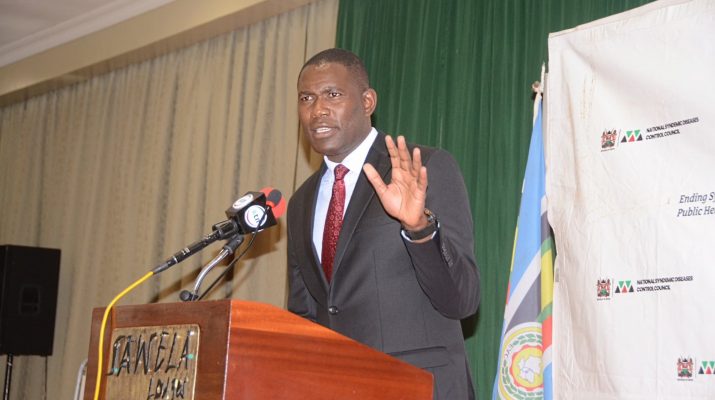By Dorothy Musyoka
The Principal Secretary for Medical Services, Dr. Ouma Oluga, has called on the county governments to integrate HIV prevention strategies into their core healthcare services, in response to an alarming rise in new infections among adolescents and young adults.
Speaking during the opening of the Joint Annual Program Review Workshop on the Syndemic Strategic Framework organized by the National Syndemic Diseases Control Council (NSDCC) in Naivasha, Dr. Oluga emphasized the urgent need to address the growing threat of HIV infections among individuals aged 15 to 24.
He revealed that nearly 6,000 new cases were reported in this age group alone, terming the trend “deeply troubling.”
“We have issues of prevention that we want counties to now start integrating into their healthcare services,” said Dr. Oluga.
Dr. Oluga pointed out that the Ministry of Health has already put in place a coordinated county-level HIV prevention framework involving surveillance officers and community health promoters.
“We are working to consolidate efforts and ensure our interventions are both sustainable and resilient going forward,” he noted.
These efforts, he explained, are aimed at ensuring that HIV prevention measures are sustainable, community-driven, and resilient in the face of evolving public health challenges.
He attributed the persistently high infection rates among teenagers to a combination of factors, including inadequate sexual health education and inconsistent delivery of preventive services at the grassroots level.
The PS further noted that shifting dynamics in the health sector’s funding landscape, particularly for syndemic diseases such as HIV, tuberculosis, and malaria, have necessitated a rethinking of financing models and implementation approaches.
“This workshop provides an opportunity to assess county-level progress, but more importantly, to shape how we move forward in responding to syndemic diseases and implementing Universal Health Coverage,” Dr. Oluga said.
The Joint Annual Program Review Workshop brought together county health officials, development partners, healthcare providers, and civil society actors to assess progress and align interventions targeting syndemic diseases.

